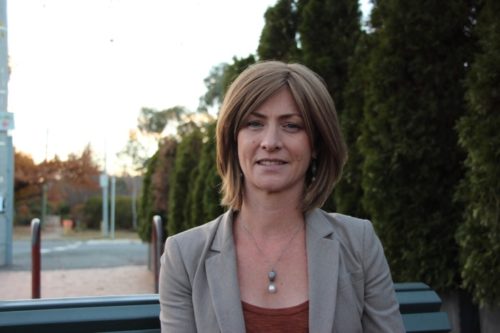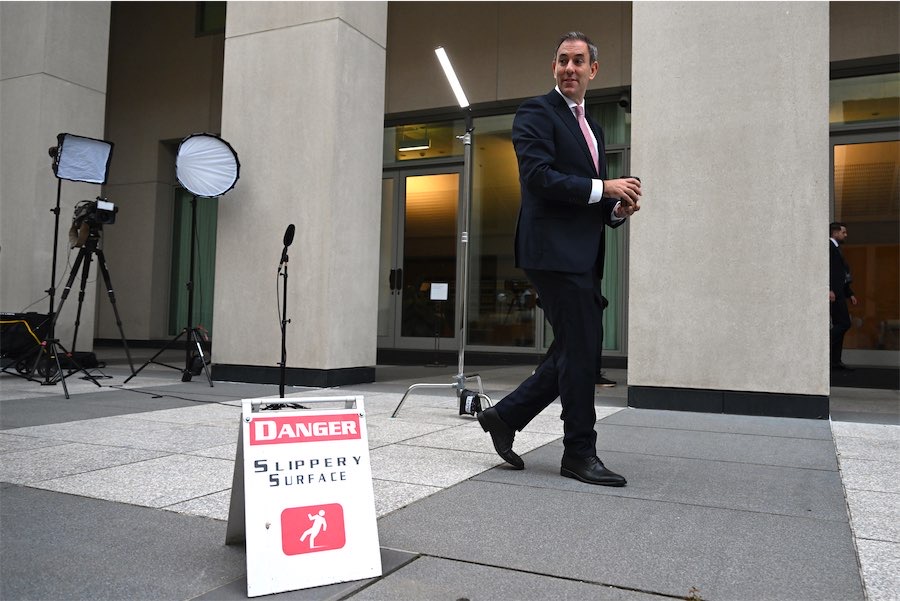
BUSINESS analyst Kate Swan is fearful for her health with the rollout of the new 5G mobile phone technology.
When her blood sugar levels started to rise after beginning a new job in Woden last year, she set out to figure out why and couldn’t believe what she found.
Kate, 37, of Woden, has been a type 1 diabetic since 1994 and when she started the job in September hadn’t changed her diet nor her exercise routine and was less stressed in her new role.
“Not knowing what could be causing this, I went on to an online forum for type 1 diabetics, and someone asked if the building had any mobile cell antennas in it or on the roof,” she says.
Kate had no idea why this would be a problem, but she went ahead and found the building on rfnsa.com.au, which revealed her work building has 2G, 3G, 4G+ and IBC antennas.
“I then jumped on to a number of medical journal sites and found study after study that show [how] exposure to electromagnetic radiation can cause an increase in blood sugar levels,” she says.
She’s since reduced her exposure to electronic radiation at home by hard-wiring all her computer devices, disabling her wifi router and turning off all electrical appliances at the wall (except for the fridge) when not in use.
And she’s cut down to part-time hours at work so her blood-sugar levels aren’t always on the rise.
She’s been to the doctor, too, and is in the process of seeing an endocrinologist professor in Sydney who is interested in her case because, she says, she could be diagnosed with “brittle diabetes” (“hard-to-control” type 1 diabetes), due to an electromagnetic radiation (EMR) sensitivity.
EMR was something new to Kate, and the more she found out about it the more she became concerned about the 5G rollout in Australia.
“Canberra already has 51 base station sites (existing towers with 3G and 4G antennas) that have or will have 5G beamforming antennas added to them,” she says.
“As someone who is already affected by electromagnetic radiation in the 3G and 4G bands, I feel incredibly angry about what is coming and worry many people will experience negative health effects and not know why.
“Studies on 3G, 4G and wifi already show that issues such as cancer, infertility, depression, cataracts, anxiety, ADHD, autism, oxidative stress, insomnia, melatonin production and cardiac changes are linked to EMR exposure.”
She wants to raise awareness of these effects, which is why Kate and other concerned Canberra residents are planning a public meeting in early September.

Darius Leszczynski, an adjunct professor of biochemistry at the University of Helsinki, has been working in the area of electromagnetic fields since 1997 and says it’s probable that the health of some people will be affected, in some way, by exposure to radiation emitted by wireless communication devices and networks.
But, he says there’s no way to find out who is more sensitive because the research in this area is incomplete and the research, which has already been done, is inconclusive.
However, there are various scientific studies that suggest exposure to wireless radiation might cause cancer, infertility or various neurological health problems, according to Dariusz.
“The most studies we have [are] on brain cancer,” he says.
“These studies suggest that using cell phones for over 10 years increases the risk of developing brain cancer. However, it doesn’t mean that every user will develop brain cancer, only some, more sensitive persons might develop this disease.
“There are also suggestions, or indications, that wireless radiation might affect fertility or cause neurological disorders but the scientific evidence is still sketchy and much more studies are necessary.”
Dariusz says more studies are needed to determine whether EMF exposures increase blood sugar levels, too.
“Most of the studies were done on cells grown in a laboratory or on animals,” he says.
“We need human studies. If there is indeed an effect on persons with diabetes it remains to be determined and proven. It is suspected but not proven sufficiently.”
When it comes to 5G and people’s health, “CityNews” asked Dariusz if people, like Kate, should be wary of its rollout.
And, when looking at the research that shows 3G and 4G-emitted radiation might cause health effects such as brain cancer, Dariusz says people should be.
“5G will comprise parts of 3G and 4G technologies with an additional technology that uses millimeter-waves,” he says.
“This, likely, might happen not in every user but only in persons who are as individuals more sensitive to this radiation.
“We should be made well aware that there is no sufficient research on [the] new modality of 5G, millimeter-waves, to assure that the current safety limits indeed protect every user, no matter young or old, no matter healthy or ill.
“We should not panic or scaremonger but we should be precautionary and, whenever possible, limit unnecessary exposures to radiation.
“We should also demand that sufficient research funding would be set aside to execute necessary research on 5G-emitted radiation, especially the millimeter-waves.”
The assistant director of assessment and advice at the Australian Radiation Protection and Nuclear Safety Agency (ARPANSA), Dr Ken Karipidis, says it’s not aware of 5G causing any health risks to humans.
“International health authorities including ARPANSA have assessed all of the available evidence and have concluded that there are no established [health risks] at such low levels,” he says.
When Ken refers to “low levels” he is talking about all mobile phone networks, including the current 4G and 5G networks, which he says produce low-level radiofrequency electromagnetic energy in the form of radio waves.
“The level of exposure from these radio waves is well below the limits of the Australian standard developed by ARPANSA,” he says.
More on the 5G public event from canberra5gevent@gmail.com
Who can be trusted?
In a world of spin and confusion, there’s never been a more important time to support independent journalism in Canberra.
If you trust our work online and want to enforce the power of independent voices, I invite you to make a small contribution.
Every dollar of support is invested back into our journalism to help keep citynews.com.au strong and free.
Thank you,
Ian Meikle, editor









Leave a Reply